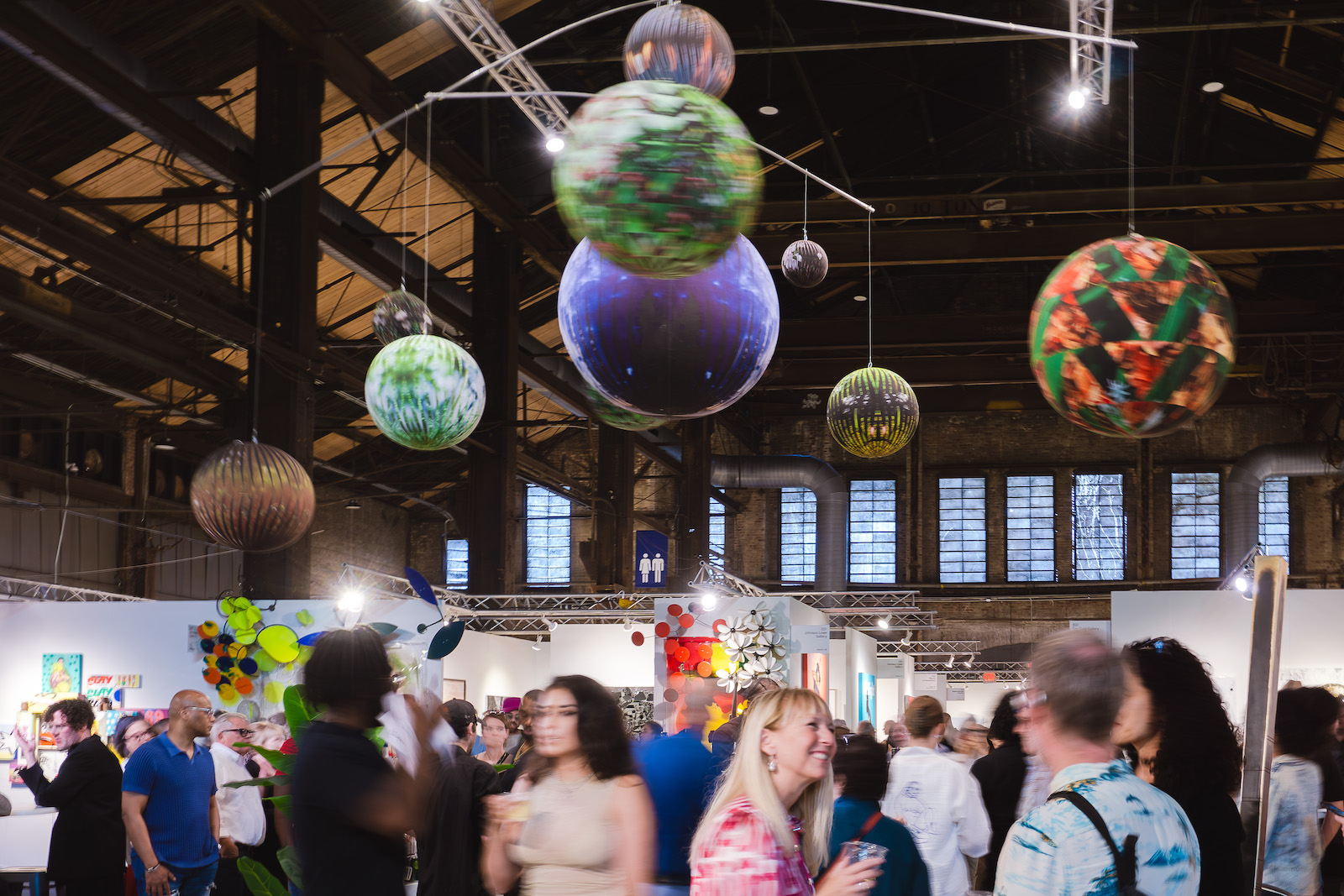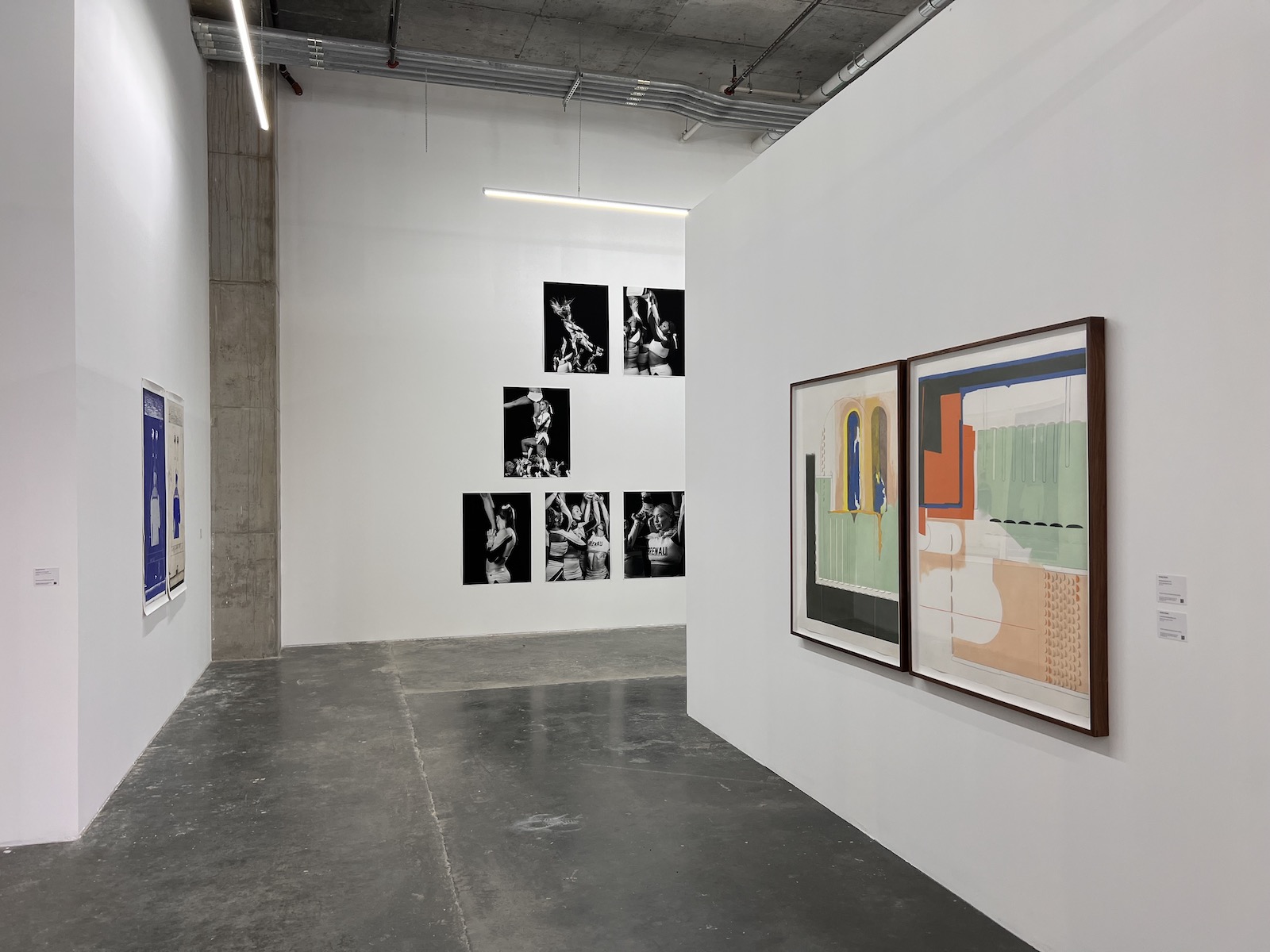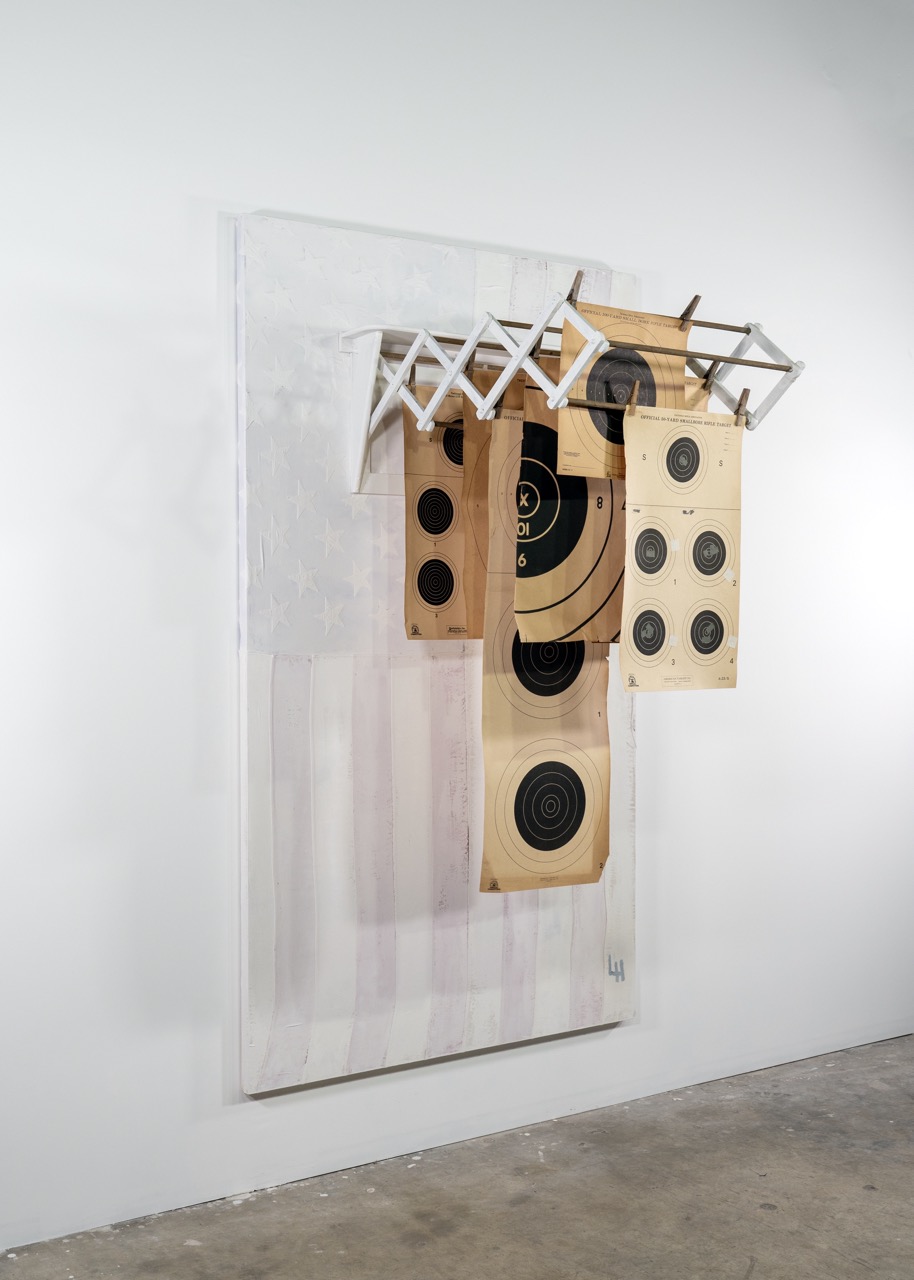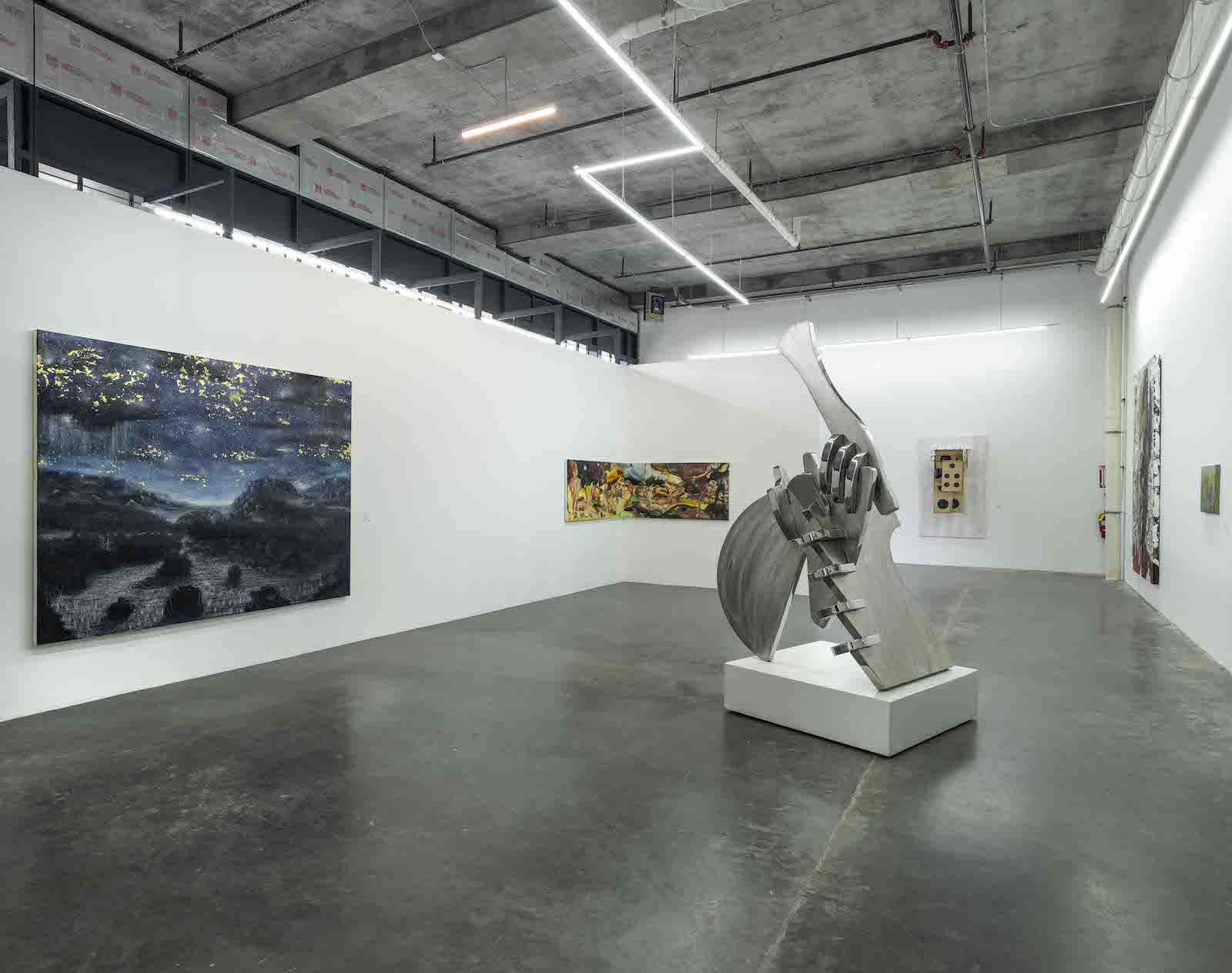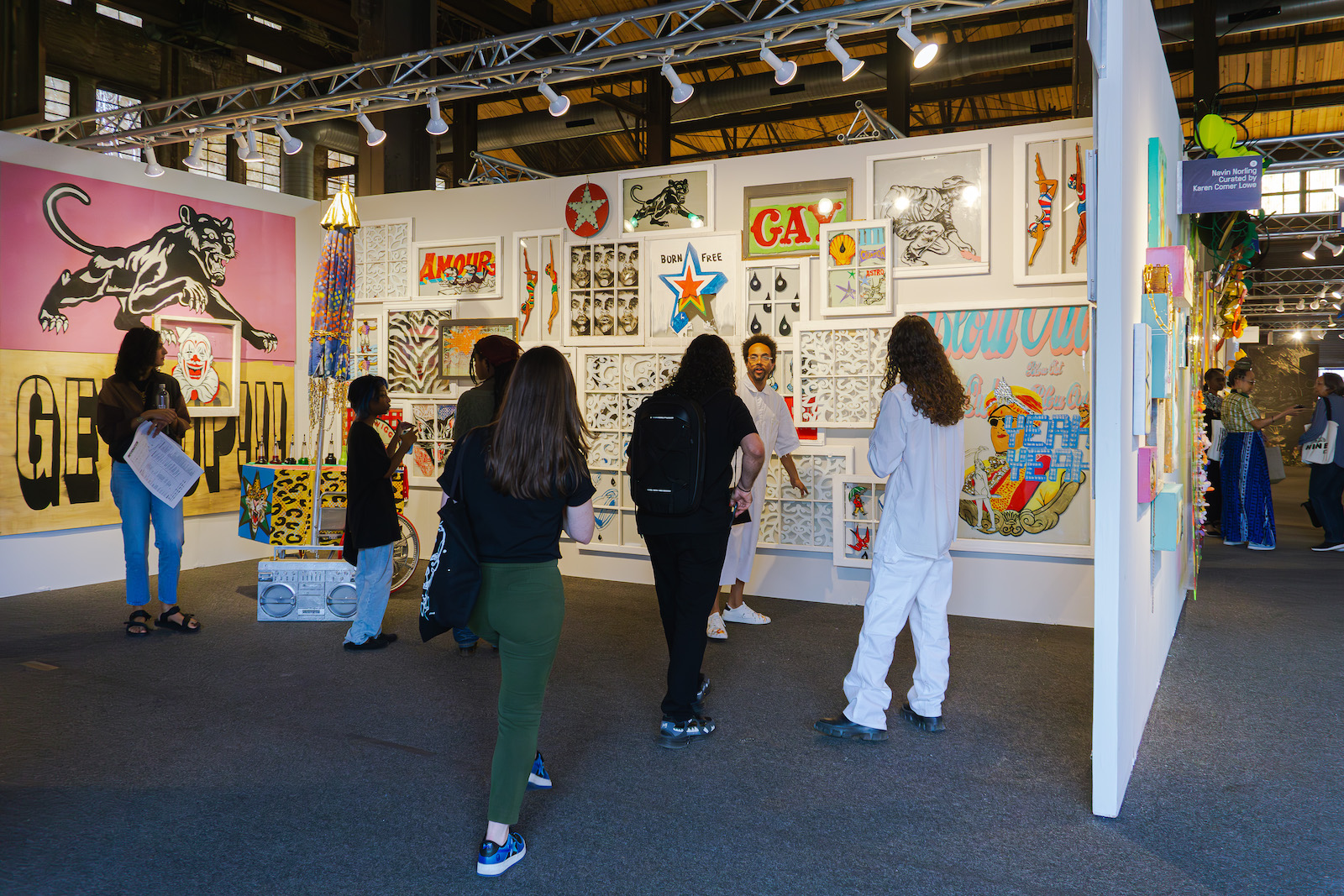The Perpetual Almost

Aineki Traverso, The Middle Distance, 2024 [photo: Wyatt Kane; courtesy of the artist]
Share:
A couple of months have passed since Atlanta Art Week and the inaugural Atlanta Art Fair. Parties attended, networking achieved, booze drunk, walls and artwork installed and deinstalled. The dust has settled, as has the media coverage. For a short time, the Atlanta art scene experienced something rare and exciting—robust and overwhelmingly positive national news coverage.
Atlanta’s visual arts representation in the national media is sparse at best, so the sudden slew of articles, interviews, and—ever the crowd pleaser—“listicles” was notable. Some outlets focused coverage on galleries and collectors, others considered Atlanta’s larger DIY art community, and some focused exclusively on the buzz surrounding the first Atlanta Art Fair.1 Most writers praised the same four or five events—more on those later—for their scale, popularity, talent on display, and general pizzazz. The overarching sentiment was often the same: Atlanta, long undervalued, is now a rising star.
Crowds buzz at the Atlanta Art Fair while Jeffrey Gibson’s “THE MANY WORLDS” (2023) hangs overheard. [Courtesy AMP]
Artsy described the city as “overlooked” but now “rapidly ascending.” Hyperallergic went a step further, stating that Atlanta is “in a golden era.” Art News praised the fair as heralding an “art destination ascendent.” The Art Newspaper reported that Atlanta has “stepped into the spotlight.” Vanity Fair asked, “Is Atlanta the country’s next great art hub?” And on and on. Once neglected, once forgotten, but now on the verge, pushing forward, growing exponentially—the place to be. The press coverage is welcome, but anyone who has been in the scene for a while may recognize a familiar pattern.
David Baerwalde, Untitled Ziggurat, installation view at Goat Farm, 2024 [photo: James Ly; courtesy of the artist]
Cheyenne Hendrickson, Touching Sonic Memories, 2024 [photo: James Ly; courtesy of the artist]
To be sure, Atlanta Art Week and Atlanta Art Fair—which, for editorial simplicity and reader sanity, will be referred to as AAW/AAF for the remainder of this article—proved to be momentous days for Atlanta’s frenzied and extraordinarily resourceful art scene. SITE—a sprawling one-night-only event with art installations, live performances, multiple stages, exhibitions, and open studios at the Goat Farm—was a clear triumph. Organized by the Goat Farm and co-curated with Jacob O’Kelley, SITE used the Goat Farm’s infrastructure to its advantage by commissioning an overwhelming array of artists and performers to create site-specific works. Notable ones included Aineki Traverso’s The Middle Distance, a painting installation that could be viewed only at a distance, via viewfinder, and Heather Bird Harris’ decomposition (fertile ground for new shapes), a watercolor and video installation made from the dust of the site’s surrounding brick walls. Another standout element was the end is near, the end is the beginning, a short film series, curated by Lauren Tate Baeza. The multiscreen installation of films projected on the partially ruined brick walls of one of the historic Goat Farm structures created a site within the site, and it brought the impressive artist line-up of Zina Saro-Wiwa, Maya Cozier, Charmaine Minniefield, and Kimberly Binns. Equal parts cohesive and chaotic, and reminiscent of Atlanta’s FLUX NIGHTS of yore, SITE was one of the largest and most powerful art events during the week.
The Temporary Art Center…an Atlanta Biennial… installation view 2024, works by John Folsom, Jill Frank, Krista Clark [courtesy of Temporary Art Center]
AAW also hosted the return of Temporary Art Center (TAC), a nomadic curatorial pop-up–exhibition project, which presented … an Atlanta Biennial …. It featured works by 30 of Atlanta’s A-listers, curated by TAC lead Scott Ingram, Fahamu Pecou, Melissa Messina, and Antonio Darden. Located in the trendy Fourth Ward Offices building adjacent to the Eastside Beltline Trail, this iteration of Temporary Art Center was a departure from their previous projects. Five years ago, Temporary’s PROJECT occupied a warehouse on the verge of being torn down. In PROJECT, a semi-abandoned space was transformed into a place of cultural value, before being destroyed and living up to its “temporary” nature. Structurally, it also functioned as a wry metaphor for the ways in which the rapidly changing city views and assigns worth to spaces, and how art and artists become caught up in the cycle of desirability and destruction. PROJECT was colloquially referred to by some as the “real Atlanta biennial” for its success, popularity, and keen understanding of the scene and the major players within it. This latest project demonstrated a clear vibe shift. … an Atlanta Biennial …2was sleeker, more commercial, cleaner (literally and conceptually), and tighter. In this project, the “temporary” element was tied less to literal destruction of space, and more so to the fact that … an Atlanta Biennial … was temporarily located in an already developed space that will—and perhaps already has—become some of the most expensive commercial real estate in Atlanta, with yearly rent standing at more than $400,000. The impending destruction here is less obvious, in terms of visualization, but keenly felt, nonetheless. … an Atlanta Biennial … boasted an impressive artist list, and standouts included photographer Jill Frank’s precarious photo-installation tower of cheerleaders, Antonio Darden’s mesmerizing video work Untitled (Perform), and an early, rarely shown untitled self-portrait by recently deceased Atlanta legend Radcliffe Bailey.
Lonnie Holley, They Fought to Keep It White, 2023, American flag, acrylic, oil stick, drying rack, clothes pins, and paper targets on panel, 82 x 48.25 x 36.5 inches [courtesy of the artist and Temporary Art Center]
The Temporary Art Center…an Atlanta Biennial… installation view 2024, works by Michi Meko, Aineki Traverso, Curtis Patterson, Lonnie Holley, Alfred Conteh, María Korol [photo: Fredrik Brauer; courtesy of Temporary Art Center]
Atlanta Art Fair, the newest and most anticipated event of the week, proved—to the relief of all involved, including Art Papers itself—a success, at least to casual observers. Most importantly, it was legit. The AAF resembled art fairs that those who have traveled to major fairs outside Atlanta have experienced—the kind of fair that, a few years ago, would have been hard to imagine taking place in our own back yard. AAF enjoyed a slick VIP crowd on opening night, and over the course of three days it received a steady influx of visitors and attendees for a full line-up of panel discussions. Atlanta’s own Whitespace Gallery, led by Susan Bridges, presented Sonya Yong James and Amy Pleasant in a strong, sophisticated curation that enhanced both artists’ works. Karen Comer Lowe curated an outstanding and maximalist showcase of Navin Norling, represented by Johnson Lowe Gallery, as well as an installation of Pam Longobardi’s environmental artworks. In a surprisingly poignant move, Flux Projects chose to showcase Gyun Hur’s durational installation of hand-blown glass, Their tears now yours washing over where it aches, which features vessels filled with local creek waters and archival materials to create a poetic meditation on time, memory, and collective grief—a needed moment of reflection in an otherwise chaotic environment.
The question murmured between sips of giveaways from fair sponsor La Croix, as the AAF entered its third day, was tense and largely unanswerable: Is anyone selling anything? The major collectors, who so often snub Atlanta in favor of an easy flight to New York City or Miami, had shown up. But did they bite? AAF has already committed to coming back in 2025, but its continued presence is almost certainly contingent upon whether the fair—and the galleries that make it a worthwhile experience—earn any revenue. Everyone wants the cultural capital of Atlanta, but that desire is first and foremost predicated upon the unspoken agreement that that cultural capital will, in not too short of time, lead to hard capital.
Installation of Navin Norling’s work curated by Karen Comer Lowe at the Atlanta Art Fair [courtesy AMP]
Atlantans are familiar with this dynamic. Just a few months ago, UTA—the wealthy talent agency that, when it first opened its art space here, had received praise from the New York Times as a harbinger of Atlanta as an “art destination”—packed up, seemingly in the middle of the night, apparently due to an unfavorable cost/benefit analysis. Reckoning with the overt condescension of claims that Atlanta’s art scene can be “fixed” by a big brand name with a PR budget, combined with the gallery’s sudden (but perhaps predictable) exit less than a year later, is a wretched kind of humiliation. Possibly, the same fate awaits AAF, with Atlanta, once again, left to rise from the wreckage, and to act as if we never really cared that much in the first place.
The positive press coverage that stemmed from AAW/AAF is justified, but the subtext is spikey. Now, with a modicum of distance, and a chance to recover from the haze and stress of it all, Atlanta could ask the question: What, exactly, are we growing so rapidly toward? What does it mean to “make it” as an art destination? What even is an “art destination,” and who benefits from Atlanta’s being one? How much longer must we, as a city, constantly edge ourselves—almost there, ascending, before we reach a hypothetical golden plateau where the money, talent, accolades, and recognition of a so-called global art capital reside? If the money never comes, can we still value ourselves and the tremendous talent that resides here?
Atlanta is a city perpetually stuck in “almost” and “maybe” and “soon, soon, soon.” This mentality, whether self-inflicted or perpetuated by a well-meaning (if perhaps narratively lazy) press, feeds into a chronic inferiority complex and a skewed sense of identity. Atlanta has growing pains, but it has always had them. These intense moments, in which Atlanta is on the cusp of some impalpable legitimizing in the eyes of the nation, have occurred again and again, for decades. Just look in the ART PAPERS archives. If Atlanta stops trying to prove an intangible something to a faceless someone, we might be able to look in the mirror and see something that we’ve forgotten already exists: a creative, vibrant, resourceful city, filled with talented, kind, dedicated people who do so much with so little, again and again.
EC Flamming is a writer, editor, and curator based in Atlanta, GA. She works at Georgia State University’s Ernest G. Welch School of Art & Design, and is the managing editor of Gulch Magazine, a publication of visual art and culture in Atlanta. EC’s editorial work focuses on the cultural impacts of moving images and contemporary art to explore how media shapes and reflects social relations. She has written for Art Basel, ART PAPERS, ArtsATL, Screen Slate, Paste, BURNAWAY, Photograph, and Another Gaze.
References
| ↑1 | Some clarification on the distinction between Atlanta Art Week and Atlanta Art Fair: They occurred simultaneously during the first week of October 2024. Atlanta Art Week was founded by Atlanta-based art advisor Kendra Walker in 2022. Atlanta Art Fair is presented by Art Market Productions (AMP), under the direction of Kelly Freeman, director of AMP, and in collaboration with Intersect Art and Design. Atlanta Art Week and Atlanta Art Fair did not partner in any way, and the two are not affiliated. Some events during the week were formally AAW events, others were AAF events, and yet others coincided but were unaffiliated with either. Both AAW and AAF are for-profit enterprises. |
|---|---|
| ↑2 | Although the title “… an Atlanta Biennial …” has—perhaps intentionally—caused confusion, the Temporary Art Center does not plan to organize, host, or otherwise be involved in a recurring citywide biennial. The most recent “official” Atlanta Biennial took place in 2021 at Atlanta Contemporary. |
